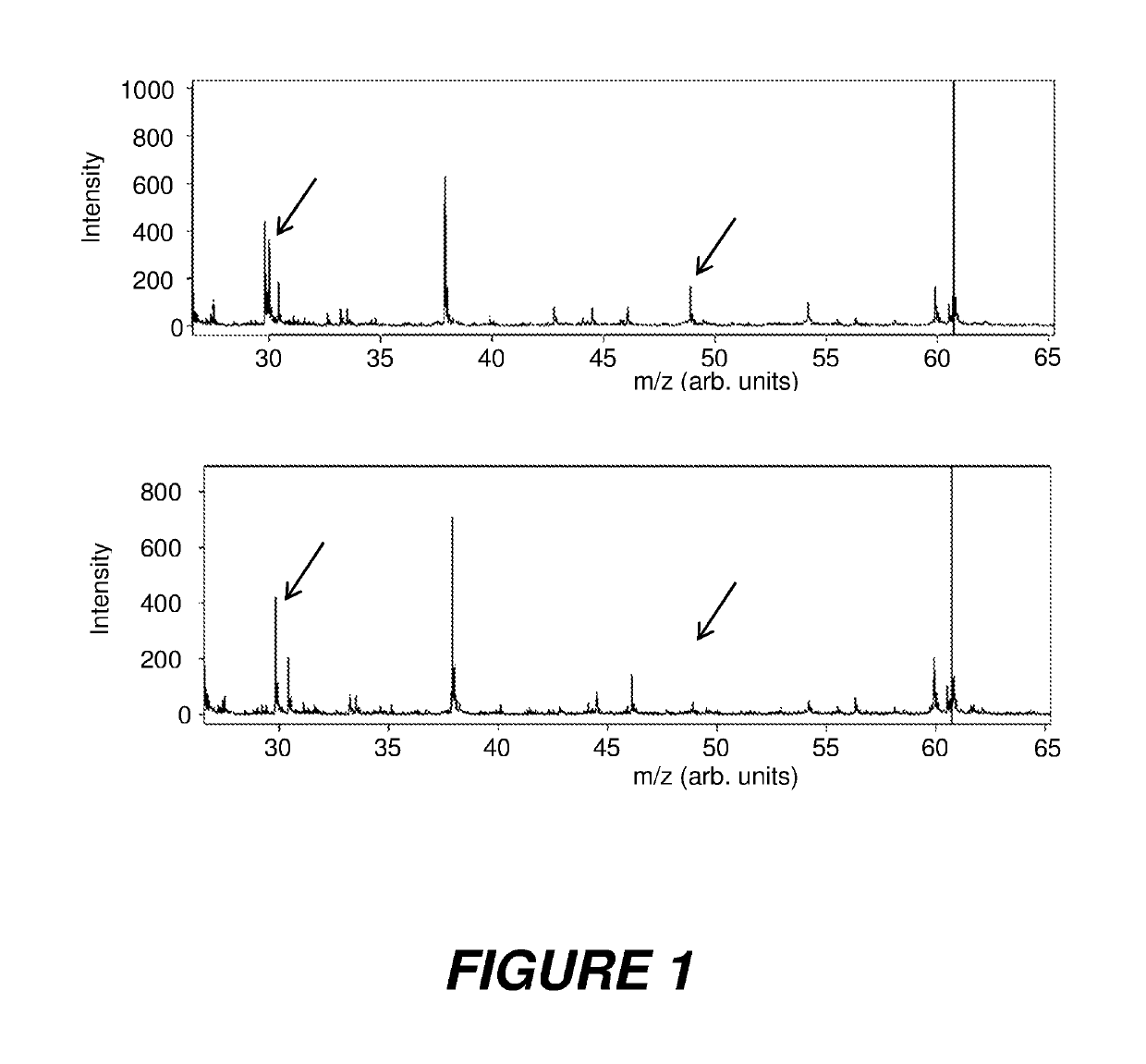Rapid test for microbial resistances by mass spectrometry
a mass spectrometry and rapid technology, applied in the direction of biochemistry apparatus and processes, particle separator tube details, instruments, etc., can solve the problems of time-consuming and laborious, and often involve manual procedures
- Summary
- Abstract
- Description
- Claims
- Application Information
AI Technical Summary
Benefits of technology
Problems solved by technology
Method used
Image
Examples
Embodiment Construction
[0022]Many species of microbe, particularly bacteria, archaea and unicellular fungi, can be quickly and easily identified mass spectrometrically by taking small quantities of microbes from a colony cultured in the usual way on or in a nutrient medium and transferring them onto a mass spectrometric sample support plate, where they are digested with a solution of a matrix substance, dried, and measured mass—spectrometrically by ionization by matrix-assisted laser desorption. The profile, containing around 40 to 80 proteins in each case, which are typically in the mass range between 3000 and 20000 daltons, is used to determine the identity of the microbes by similarity analyses with thousands of reference spectra. The term “identification” here is deemed to mean the taxonomic classification, i.e. the determination of family, genus, species and possibly subspecies. There are meanwhile libraries with reference spectra of thousands of microbial species which are medically and legally admi...
PUM
| Property | Measurement | Unit |
|---|---|---|
| mass spectrometric | aaaaa | aaaaa |
| mass spectrometric | aaaaa | aaaaa |
| mass spectrometric | aaaaa | aaaaa |
Abstract
Description
Claims
Application Information
 Login to View More
Login to View More - R&D
- Intellectual Property
- Life Sciences
- Materials
- Tech Scout
- Unparalleled Data Quality
- Higher Quality Content
- 60% Fewer Hallucinations
Browse by: Latest US Patents, China's latest patents, Technical Efficacy Thesaurus, Application Domain, Technology Topic, Popular Technical Reports.
© 2025 PatSnap. All rights reserved.Legal|Privacy policy|Modern Slavery Act Transparency Statement|Sitemap|About US| Contact US: help@patsnap.com


